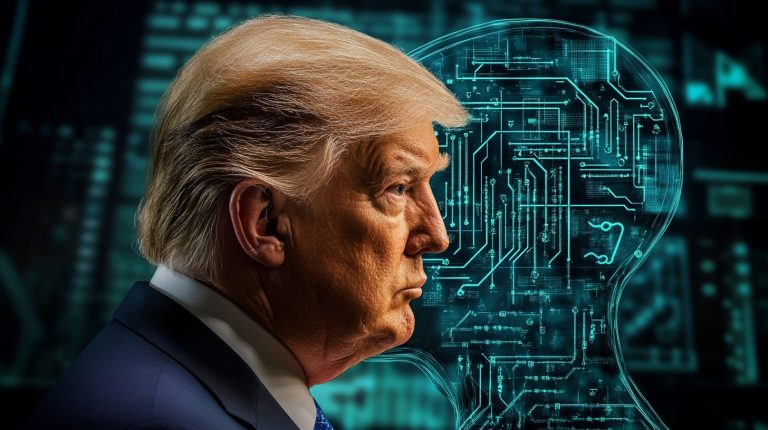
The executive order signed by President Donald Trump on March 25, 2025, titled “Preserving and Protecting the Integrity of American Elections.” This order, enacted during his second term as the 47th president, aims to overhaul U.S. federal election processes. The order mandates documentary proof of citizenship—like a passport or birth certificate—for voter registration in federal elections, a shift from the current system where self-attestation under penalty of perjury suffices. It also demands that all ballots be received by Election Day, rejecting late arrivals regardless of postmark—a tighter rule than many states currently follow.
States are directed to collaborate with federal agencies like the Department of Homeland Security (DHS) and the Social Security Administration to share voter lists and verify citizenship, with the Attorney General tasked to prioritize prosecuting non-citizen voting. Non-compliant states risk losing federal election funds, a stick to enforce cooperation.
Trump pitched this as a fix for what he calls a “sick” system prone to fraud, echoing his long-standing claims—unsubstantiated by large-scale evidence—about rigged elections. The order rescinds Biden’s 2021 directive that boosted voter registration via federal agencies, framing it as partisan overreach.
It also tasks the Election Assistance Commission (EAC) with updating voting system guidelines, pushing against tech like QR-coded ballots to favor paper-based, “chain-of-custody” methods. It’s a power play with teeth—but shaky legs. Constitutionally, states hold broad authority over elections under Article I and the 10th Amendment; the president can’t unilaterally rewrite those rules. Experts like UCLA’s Rick Hasen argue the EAC can’t be forced to amend forms this way—it’s bipartisan and independent for a reason.
Register for Tekedia Mini-MBA edition 19 (Feb 9 – May 2, 2026): big discounts for early bird.
Tekedia AI in Business Masterclass opens registrations.
Join Tekedia Capital Syndicate and co-invest in great global startups.
Register for Tekedia AI Lab: From Technical Design to Deployment (next edition begins Jan 24 2026).
Legal challenges are already brewing, with voting rights groups like the Brennan Center calling it “lawless,” citing the 2013 Supreme Court ruling (Arizona v. Inter Tribal Council) that blocked states from adding citizenship proof to federal forms without Congressional approval. The 14th Amendment’s birthright citizenship clause could also clash with any DHS push to exclude certain groups. Practically, it could shrink voter rolls. Millions lack easy access to passports—only 38% of Americans had one in 2023, per State Department data—and birth certificates can be a hassle for the elderly or displaced.
Proponents say it’s about integrity; critics say its suppression dressed as reform. Enforcement hinges on state buy-in, and blue states might just say no, daring the feds to cut funds and face lawsuits. Red states, already strict, might double down—think Texas or Georgia syncing with DHS databases. The digital defiance angle ties in too. Posts on X suggest grassroots support, with some users cheering it as a blow against “illegal voting” (though studies, like one from Brennan in 2014, peg non-citizen voting at under 0.0001% of ballots).
Others call it a power grab, predicting chaos at the polls. It’s a polarizing move, fueled by Trump’s narrative and enabled by tech that lets both sides rally fast—encrypted chats for planning, viral posts for amplification. Will it stick? Doubtful without Congress or courts bending. It’s a bold imprint, but the system’s checks—state autonomy, judicial review—might sand it down.
Encryption scrambles election data—voter registrations, ballot casts, or results—so only authorized parties with the right keys can read it. End-to-end (E2E) encryption, like what Signal uses, ensures even system operators can’t peek. Estonia’s been the poster child since 2005, with over 50% of its 2023 parliamentary votes cast online via an E2E-encrypted i-Voting system. Voters get a cryptographic receipt to verify their ballot, and the code’s open-source—anyone can audit it. Switzerland tried something similar with Scytl’s system, encrypting votes from cast to count, though it hit a wall in 2019 over transparency bugs.
In the U.S., it’s patchier. Voatz, a mobile voting app, used encryption for West Virginia’s 2018 midterms, letting overseas military vote via blockchain-backed security. About 150 ballots went through, biometrically verified and E2E-encrypted. Denver piloted it too, with 2020 audits showing no breaches. Microsoft’s ElectionGuard, rolled out in 2024 trials, encrypts votes and spits out a public ledger—voters can check their tally without exposing choices. It’s not widespread; only a dozen jurisdictions tested it by now. Trump’s order doesn’t name encryption but slams digital gimmicks like QR-coded ballots, pushing a paper-first ethos.
That’s a swipe at systems like Voatz or ElectionGuard, which lean on encrypted digital flows. The order’s citizenship checks, and Election Day deadlines don’t mesh easily with online voting either—encrypted or not, verifying identity remotely gets messy when passports are demanded. It’s a signal: encryption’s welcome only if it fits a tight, analog-heavy frame. Encryption could lock down voter data against hacks—Russia’s 2016 probing of voter rolls, or China’s 2022 state-level breaches show the risk. It also fights fraud claims; cryptographic proofs let voters confirm their ballot without trusting some clerk. Estonia’s had zero verified tampering cases in 18 years.
In Africa, Kenya’s 2022 election used encrypted transmission of results from polling stations, cutting rigging rumors (though courts still tossed it over process flaws). Complexity breeds skepticism. MIT’s 2020 Voatz audit found encryption solid but app flaws exploitable—think jailbroken phones. Public trust lags too; a 2023 Pew survey showed 60% of Americans doubt digital voting, encrypted or not, versus 20% for paper. Digital defiance ties in. Activists could use encrypted platforms to monitor elections—think Telegram chats tracking irregularities in real time, like Myanmar’s 2024 resistance did. But if the U.S. doubles down on paper, encryption’s role shrinks to back-end security, not voter-facing tools.



